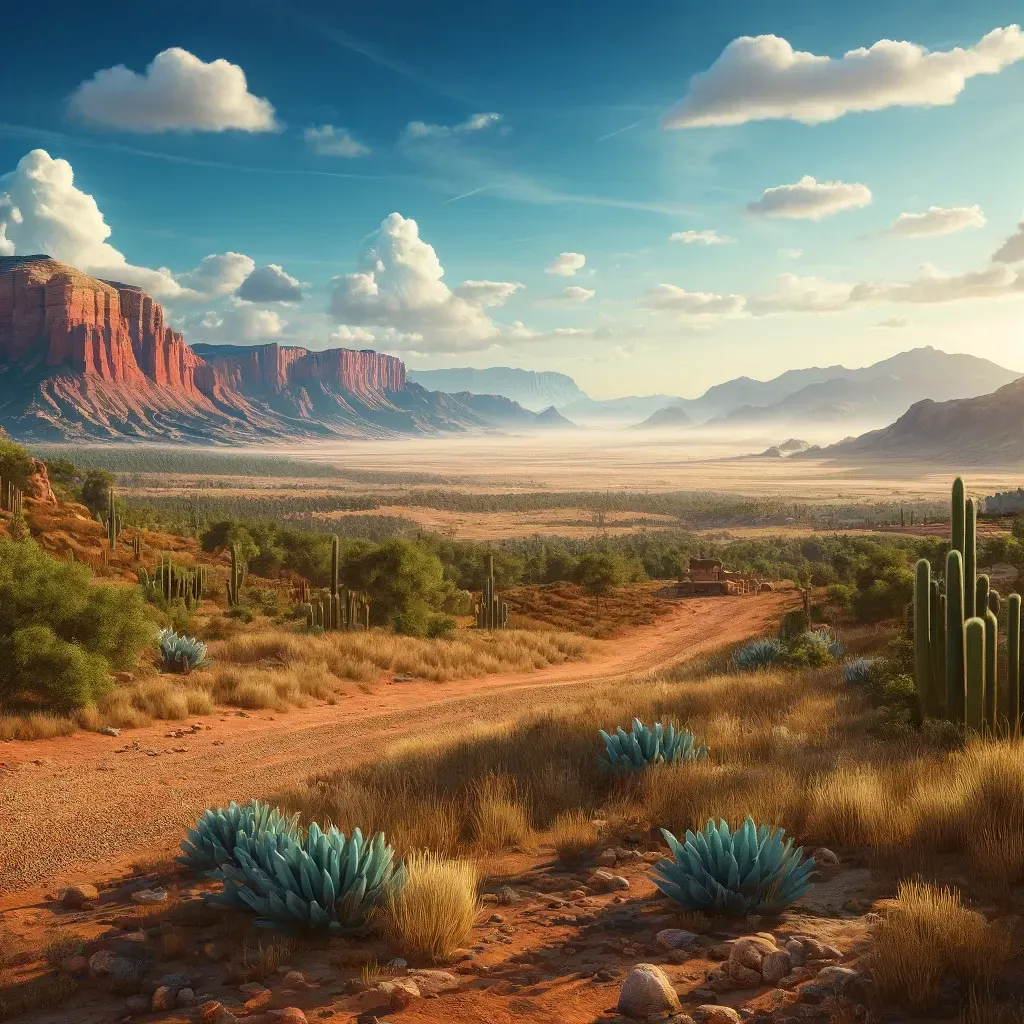
Pros and Cons of Buying Land in Arizona
Arizona encompasses over 72,688 square miles of diverse terrain, ranging from alpine forests to arid deserts. This varied landscape is increasingly attractive to prospective land buyers focused on climate, scenery, and recreational access. According to the Arizona State Land Department, the state saw more than 57,000 acres of trust land leased or sold last year, reflecting a surge in interest in land acquisition.
While statistics can provide insight, it’s essential for individuals evaluating land investments to conduct a meticulous county-by-county analysis. Market conditions, impacting prices and inventory, are counterbalanced by challenges like lack of infrastructure in remote areas and stringent regulations in sensitive ecological zones. This guide breaks down the pros and cons of buying land in Arizona, empowering buyers to make informed decisions.
Why Arizona Land is Calling Your Name
Let’s begin with the advantages of purchasing land in Arizona:
**Diverse and Dramatic Scenery**
Few states offer such diverse beauty. Northern Arizona showcases ponderosa pine forests and the iconic Grand Canyon, while southern regions present the unique landscapes of the Sonoran Desert, complete with towering saguaros. With an abundance of national parks, monuments, and wilderness areas, owning land in Arizona can fulfill a nature lover's dream.
**Year-Round Sunshine**
Dreading winter? Arizona can be the perfect escape. Southern Arizona averages an impressive 85 days annually with temperatures exceeding 100°F, while the northern high country enjoys four distinct seasons. The state boasts around 85% sunshine throughout the year, making it ideal for those seeking warm climates and blue skies.
**Affordable Property Taxes**
In Arizona, property taxes are relatively low at an average of 0.63%. Additionally, the state’s effective income tax rate stands at 2.59%, lower than the national average of 4.55%. Arizona also exempts Social Security benefits and most pension incomes from tax. These financial advantages make living or investing in Arizona attractive.
**Booming Business Opportunities**
With burgeoning metro areas like Phoenix and Tucson, Arizona has a thriving job market in sectors like finance, healthcare, technology, and aerospace. Additionally, its outdoor lifestyle draws retirees and remote workers, while tax incentives for R&D and renewable energy projects further enhance Arizona's investment landscape.
**Potential for Off-Grid Living**
Arizona's rural lands provide opportunities for off-grid living, homesteading, and agriculture. Buyers can relish vast open spaces and ample sunlight for farming, ranching, or embracing a self-sufficient lifestyle.
**Investment Appreciation**
Depending on the location, Arizona land often shows solid appreciation potential, especially near expanding cities like Phoenix. Undeveloped land adjacent to national parks also tends to grow in value, appealing to those looking for strategic investments.
Factors That May Give You Pause
Conversely, several challenges may prompt hesitation regarding Arizona land purchases:
**Water Scarcity**
Central and southern Arizona battles significant water scarcity. Groundwater pumping is strictly regulated, meaning any land purchase must include confirmed water rights for wells, irrigation, or storage. Without proper rights, development becomes a formidable challenge.
**Extreme Summer Heat**
While sunshine is abundant, it comes with searing summer temperatures, often exceeding 110°F in the Sonoran Desert. Those planning to be active outdoors during summer should prepare for early starts and frequent breaks to avoid heat exhaustion.
**Remote Living Challenges**
Many large land parcels lie in remote areas, requiring 30-60 minutes of travel to access supplies and services. Buyers should critically consider distances to basic amenities like utilities and medical care.
**Proximity to the Mexico Border**
Some rural land parcels are situated near the Mexico border, inciting concerns over illegal crossings and trafficking that could affect property values and safety.
**Environmental Risks and Droughts**
Arizona's vulnerability to chronic drought affects agricultural productivity and could hamper land development, complicating ownership.
**Wildlife Encounters**
Rural living means acclimating to local wildlife, including coyotes, bobcats, and potentially venomous creatures, presenting an adjustment especially for newcomers.
**Dust and Allergies**
Dusty desert conditions can lead to frequent windstorms and high pollen counts, making life uncomfortable for those with respiratory issues.
**Land Ownership Complexity**
Much of Arizona’s land consists of State Trust land, complicating access and ownership rights. It’s crucial to understand property boundaries before purchasing.
**Climate Change Considerations**
Future climate changes are predicted to exacerbate regional warming and drying, raising concerns about water availability, development, and agricultural viability.
Key Steps Before You Buy Arizona Land
If you’re committed to the idea of purchasing Arizona land, consider the following steps:
- Partner with a local real estate professional who understands your budget and needs, guiding you to suitable parcels.
- Investigate water rights comprehensively to ensure access to essential resources.
- Conduct thorough land inspections to assess condition, boundaries, and existing structures.
- Familiarize yourself with local zoning and permitting regulations.
- Explore the property’s perimeter to gauge proximity to essential services.
- Ensure clarity about mineral rights, as retaining them can influence land use.
- Assess terrain and potential costs related to land improvements, including accessibility and vegetation clearing.
- Engage qualified professionals for surveys and environmental assessments to prevent unexpected challenges.
By taking your time and conducting diligent research, you can find the perfect Arizona land that aligns with your needs and contribute to sustainable growth in the state's vibrant rural areas.
Final Words
Ultimately, deciding whether the pros of buying land in Arizona outweigh the cons is a personal decision. The state's breathtaking natural beauty and outdoor living opportunities are undeniably attractive but come with their own set of challenges, including water scarcity and extreme conditions.
Do your homework, seek local expertise, and remain aware of both the rewards and the realities of desert life. With careful preparation, owning a piece of Arizona can turn into an unmatched fulfillment of your dreams.
Frequently Asked Questions (FAQs)
**What’s involved in buying land in Arizona?**
The buying process resembles that of purchasing a home. Determine your budget, work with a realtor, make an inspection-contingent offer, and finalize the sale upon meeting all conditions.
**What permits might I need to build on rural land?**
Permit requirements vary by county. Generally, you’ll need permits for well drilling, septic systems, and construction. It’s crucial to check local zoning laws.
**What taxes and fees accompany land ownership in Arizona?**
Annual property taxes are low, but expect potential extra fees related to improvement districts and water use.
**Is it beneficial to buy land in an LLC?**
Establishing an LLC offers benefits like liability protection and anonymity but can complicate registration and incur additional costs. Consult a lawyer to find the best option for your situation.
**What should I look for when touring land parcels?**
Assess boundaries, terrain conditions, existing structures, wildlife presence, and access routes. Take notes and photos for comparison.



